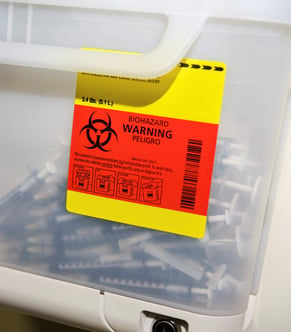In 2015, the Canadian Patient Safety Institute recognized 15 “never events” for hospital care in Canada, meaning that their rate of acceptable occurrence is zero. The criteria to determine a never event were that it met the standard of being serious, recurring, identifiable and avoidable. Retained surgical items and wrong surgical procedures are high on the list, numbers one and three.
Imagine finding out months or even years after having abdominal surgery, and enduring excruciating pain, that a sponge or some other foreign object had been left in your body. Or waking up from surgery to learn the wrong body part had been removed or the wrong procedure was performed. Knowing when and how never events occur has been recognized as key to preventing them from occurring again.
In the first of this two-part series, let’s explore the scope and prevalence of retained surgical items (RSI) in Canadian hospitals.
What are retained surgical items?
Recently, there has been increased media attention in Canada on RSI, which refers to any medical equipment, tools or supplies unintentionally left inside someone after an invasive procedure (e.g., vaginal birth or surgery). RSI most commonly occur in operating rooms, labour and delivery units and interventional radiology settings.
Too often, we hear of forgotten “soft goods” (e.g., gauze, sponges, or towels), sharp tools, instruments, miscellaneous items (e.g., gloves or cautery tips) or medical devices (e.g., guidewires or catheters) left in body cavities. If not identified and removed quickly, RSI can lead to pain, infection and even death in the post-operative phase.
How prevalent is this issue?
According to the World Health Organization (WHO), globally, surgical errors account for 27 per cent of the most common adverse safety incidents. Alarmingly, the Canadian Institute for Health Information identifies that although medical patients outnumber surgical patients by almost 3/1, the overall harm rate is similar: surgical patients represent 19.8 per cent of the admitted patient population with a harm rate of 7.6 per cent, whereas medical patients represent 56.6 per cent of the inpatient population, with a similar harm rate of 6.2 per cent.
In 2016, the Canadian Medical Protective Association and the Healthcare Insurance Reciprocal of Canada (HIROC) co-led a collaborative, 10-year review of surgical safety. Neurosurgery and orthopedic surgery had the highest incidence of harm, with the risk being highest in non-trauma, non-oncology surgical procedures.
Obese patients were shown to have an increased risk for RSI, as were those undergoing long surgical procedures and procedures involving high wait times and high patient turnover. In addition, intraoperative blood loss over 500 millilitres for adults and seven millilitres per kilogram for children, multiple procedures or multiple surgical teams, emergency procedures, unplanned changes to surgical procedures and procedures occurring over breaks or at shift change were identified as high risk.
In 2017, the Organisation for Economic Co-operation and Development identified the worldwide average for retained surgical items as 3.8 per 100,000 medical and surgical discharges. Canada’s average was 2.57 times higher, rising from 8.6 to 9.3 in 2014 to 2015 and to 9.8 per 100,000 in 2017. In 2017, Quebec had the highest rate of RSI at 15 cases per 100,000. Canada has seen positive increases in its adverse events reporting, which may be a contributing factor to increased rates of RSI in Canada.
How do we solve this issue?
In 2009, the WHO created a 19-point checklist to assist with increasing patient safety. According to the Operating Room Nurses of Canada, the WHO Surgical Safety Checklist has improved patient safety and is now used by the majority of surgical providers worldwide. The checklist is multidisciplinary and identifies roles. Surgical staff are required to count all soft goods like sponges and gauze pads, sharp tools such as needles and scalpel blades, surgical tools and miscellaneous items before and after each surgical case.
The Canadian Patient Safety Institute adapted the WHO checklist to include additional safety measures, which we will explore in depth in the next part of this series.
This is the first of a two-part series. Part two: “Patient safety and retained surgical items: Malpractice and negligence.”
Click here to read full article.

